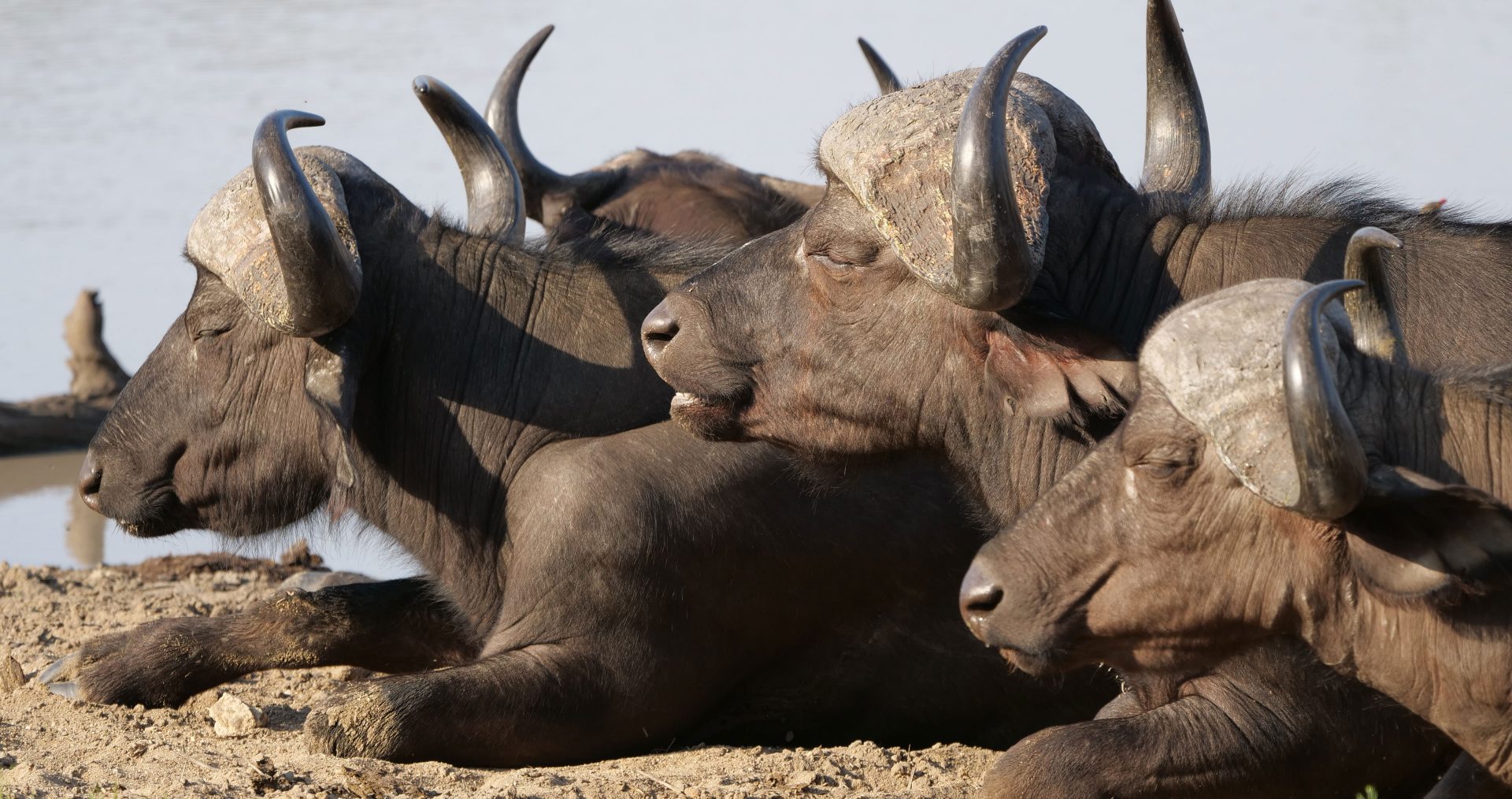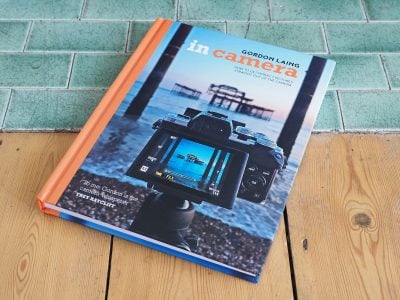South Africa Safari Photography
-
-
Written by Gordon Laing
A classic African safari is on the bucket list of many photographers, but even with the best guides bringing you close to the subjects you came to see, what can you do to ensure your images do justice to your memories? To find out I spent three days at Thornybush Game Reserve, South Africa, photographing as many of the famous animals, birds and reptiles as possible, while attempting to achieve some alternative compositions, and trying out the latest camera technologies to capture tricky moments. What follows are the stories and techniques behind my favourite images of the trip. I hope you enjoy them and find some ideas on different ways to photograph your safari.
In terms of equipment you’ll want a camera that can focus quickly and deliver good quality in low light, and a long lens that can get you close to the action. On my trip I shot with Panasonic’s Lumix G9, a mirrorless camera that can snap onto subjects swiftly even in low light, fire-off quick bursts of images, film high quality 4k video, and deploy a variety of cunning pre-capture tricks to effectively rewind and record moments that you might otherwise have missed. See my Panasonic Lumix G9 review for more details.
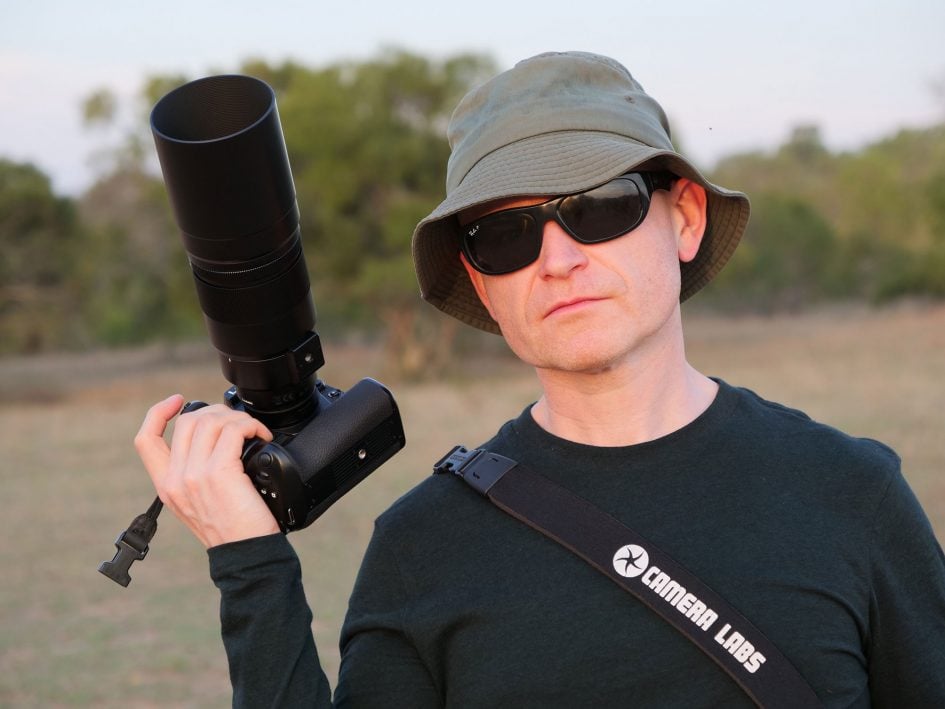
Above: Gordon with the Lumix G9 (and battery grip) and the Leica 200mm f2.8 lens.
In terms of lens, I find a 100-400mm equivalent range is ideal for animals near and far, although wider coverage is preferred for broader landscapes, big skies or establishing shots of animals in their surroundings. That said, during this particular safari in Thornybush Game Reserve, I almost exclusively relied on the Leica 200mm f2.8 lens which delivers a 400mm equivalent on the Panasonic body. I also carried the 1.4x tele-converter supplied with it when I needed extra reach, and only very occasionally swapped to the 12-60mm kit zoom for wider shots. See my Leica 200mm f2.8 review for more details. The 200mm f2.8 is a very high-end lens though, so if you’re after something more affordable for the Panasonic (or Olympus) system – and indeed more flexible thanks to a zooming capability – I’d suggest the Leica 100-400mm or the Lumix G 100-300mm. If you’re using a different system, a 70-300mm or 100-400mm would be ideal; the Sigma 100-400mm and Tamron 100-400mm represent good value for Canon and Nikon DSLR owners wanting more reach over a basic 70-300mm.
If you’d prefer an all-in-one solution, a high-end superzoom like the Panasonic Lumix FZ2000 / FZ2500 is very convenient with its 20x optical zoom range taking you from 24-480mm equivalent while still sporting a wealth of shooting modes and 4k video; see my Panasonic Lumix FZ2000 / FZ2500 review for more details. Also consider the Sony RX10 Mark IV with its slightly longer 24-600mm range and more confident tracking, albeit at a comfortably higher price. If you’re looking for all of my recommendations in every category, check out my Best Camera Guides.
South Africa Safari photography
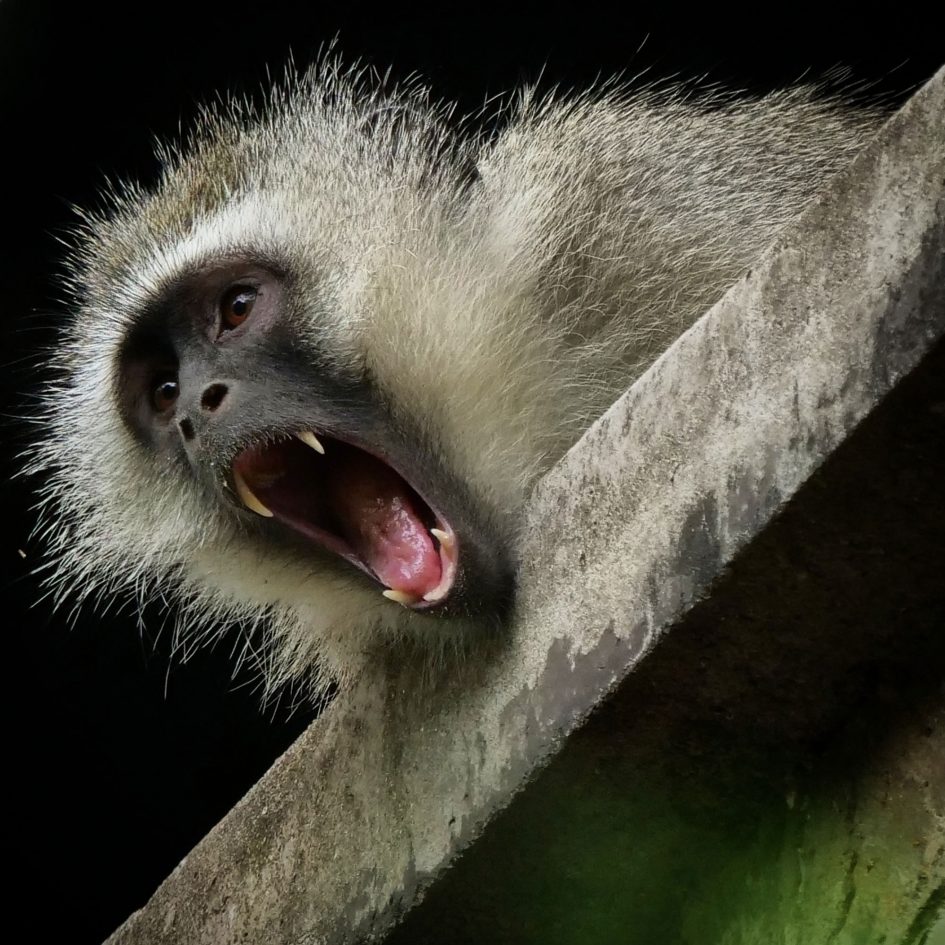
Above: if you’re staying inside or close to a game reserve, keep an eye open for any animals relaxing or hunting around the grounds. Various monkeys can be a common sight, keeping their eyes peeled for any food that’s been ignored for more than a few moments. This guy was spying on our dining table from below the roof of a building opposite. The shadowy overhang of the roof provided somewhere for him to hide, but equally served as a handy background to contrast against his light fur. Of all my cheeky monkey photos, I like this one the best for its background and his casual yawn which looks here more like a scream.
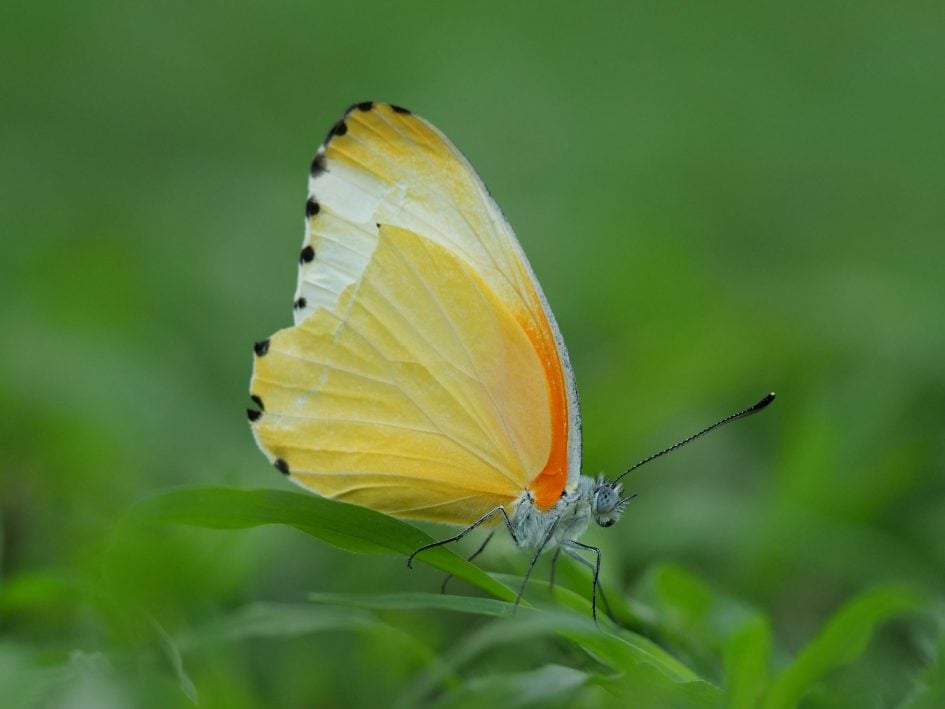
Above: Most safaris are focused on the big game, but I’m also fond of the smaller creatures for contrast. I spotted this butterfly on a lawn around our accommodation and exploited the close focusing distance of my lens to almost fill the frame. I went for a very low angle just above the ground for a side-on view and opened the aperture wide to blur everything in front and behind. Having an articulated flip-out screen makes shooting at low heights very simple, while a touchscreen allowed me to quickly reposition the AF area over the head of the insect rather than the wings without having to lock and recompose; while the AF area was active, I also took the opportunity to reduce its size to better-pinpoint the subject.
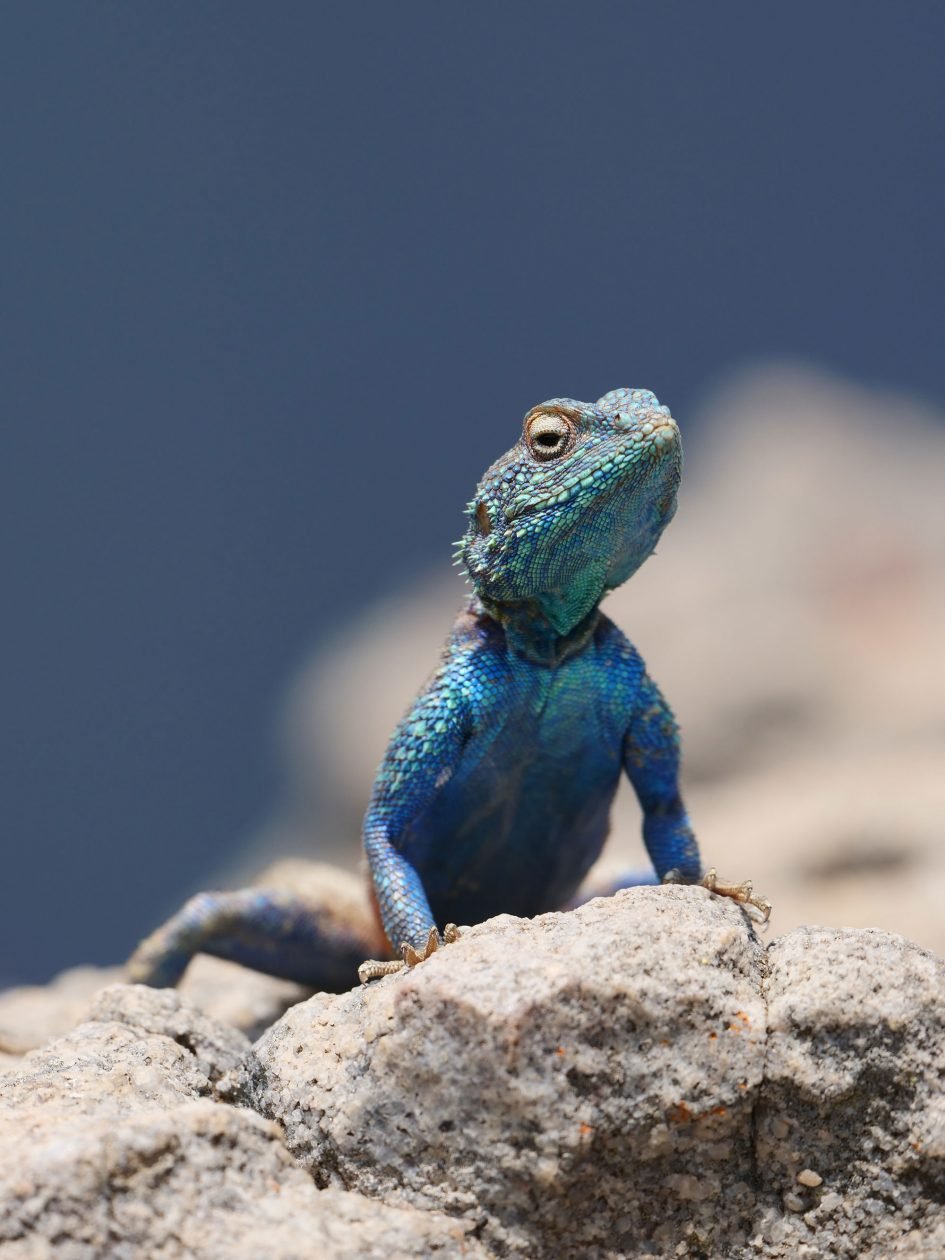
Above: If you’ll indulge me, here’s another close-up of a smallish creature, this time a lizard posing co-operatively for me on a nearby rock. I loved the details on the scales here. Indeed it’s one of my favourite images from the trip. Again when shooting subjects like these, try adjusting your angle to avoid distracting backgrounds. When you’re on a game drive, you may be limited in positions and angles once you’ve found your subject, but when you’re on-foot, there’s nothing stopping you from exploring the scene. But a word of warning: little critters like these can disappear in a moment, so as you’re approaching one or exploring different angles, keep shooting so you have at least some images in the bag.
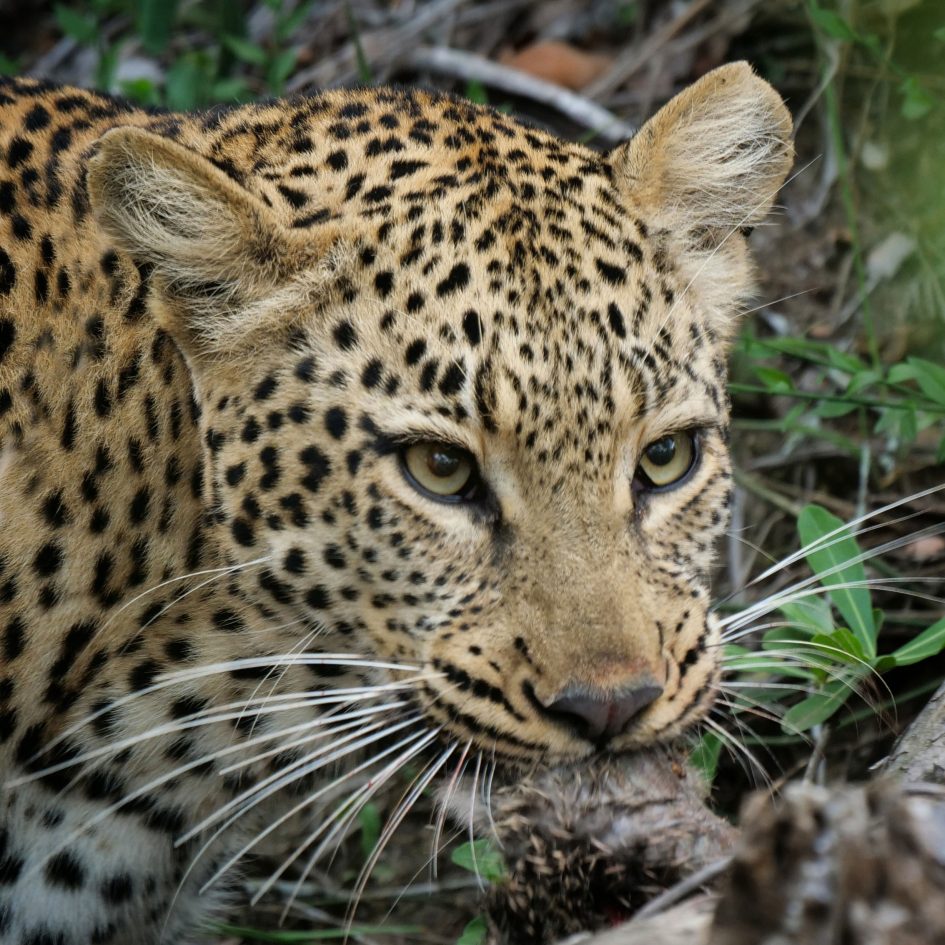
Above: Sometimes you’re lucky enough to bag one of the most elusive creatures early on your trip – like this baby leopard spotted by our expert guides only ten minutes into our first game drive. This cub was feeding in a protected spot surrounded by trees and bushes that made getting a clear shot very difficult. From my seat there was a branch crossing its face and while I could pinpoint the focus on the subject, I wasn’t happy with the result. Driving back and forth a little didn’t help a great deal, but I did find raising or lowering the camera’s position did. I was careful to heed our driver’s instructions not to stand-up, but instead flipped the screen out to shoot with the camera lowered down outside the vehicle a little. Even this small distance allowed me to effectively peek under the offending branch and bag a clearer view; later I cropped-out the leafy surroundings, to focus on the subject, although sometimes it’s fun to leave the foliage visible to remind you of the scene.
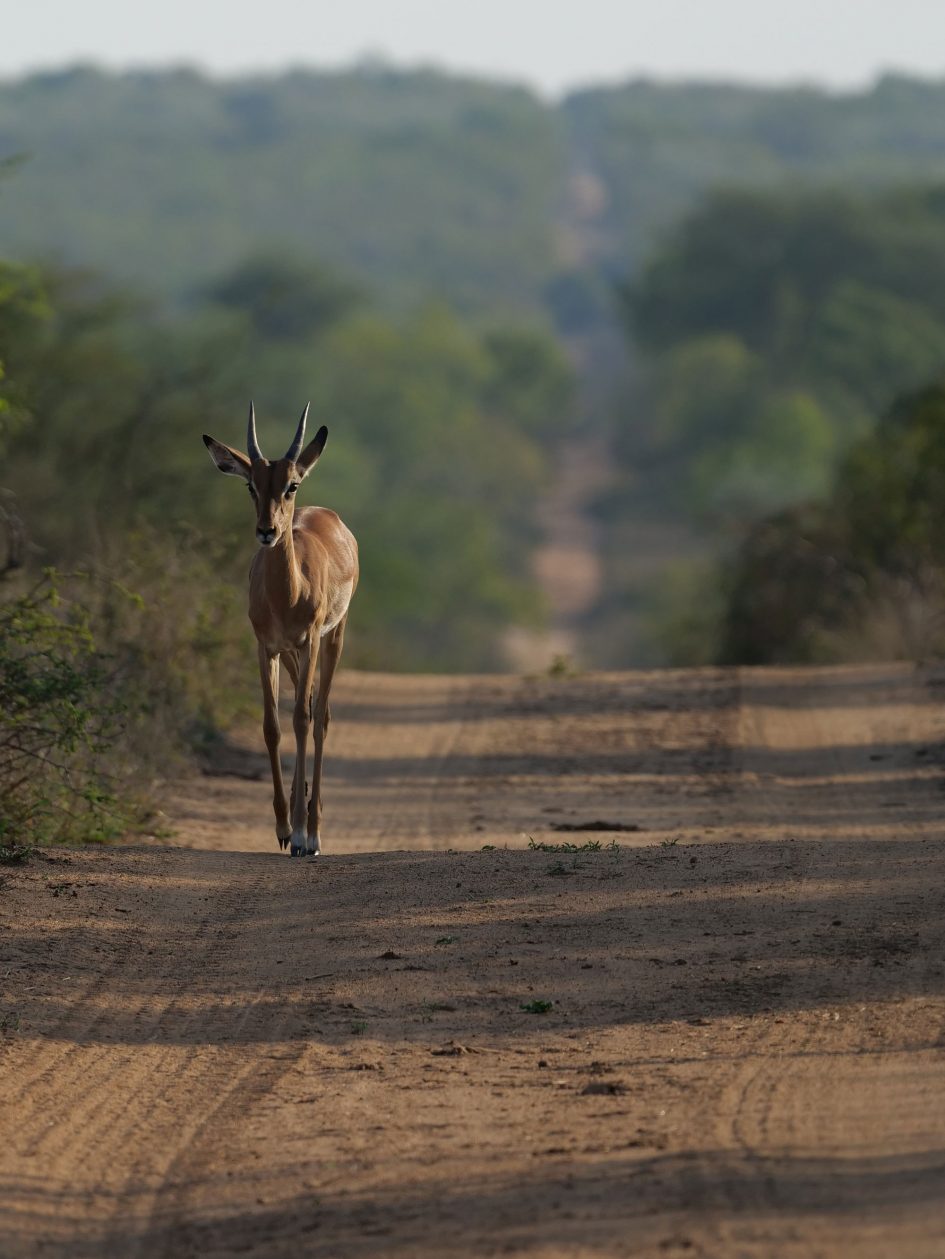
Above: the most common animals on any game drive will invariably be the herds of Impala, Kudu and other varieties of deer. While not as elusive as a big cat, I’m still fond of photographing them, particularly using their ubiquity as a chance to include different surroundings or compositions. I spotted this Impala near Sunset as we drove along one of the many straight roads which seemed to go on forever into the distance. It was strolling along the road, alternately passing through strips of light and shadow. I waited for it to enter one of the illuminated sections where the low Sun shone between the bushes to better highlight it against the increasingly shaded surroundings. Shooting with a long telephoto lens allowed me to compress the perspective and again blur everything in front and behind, while the side of the road leads your eye from the foreground to the animal and beyond to the far distance.
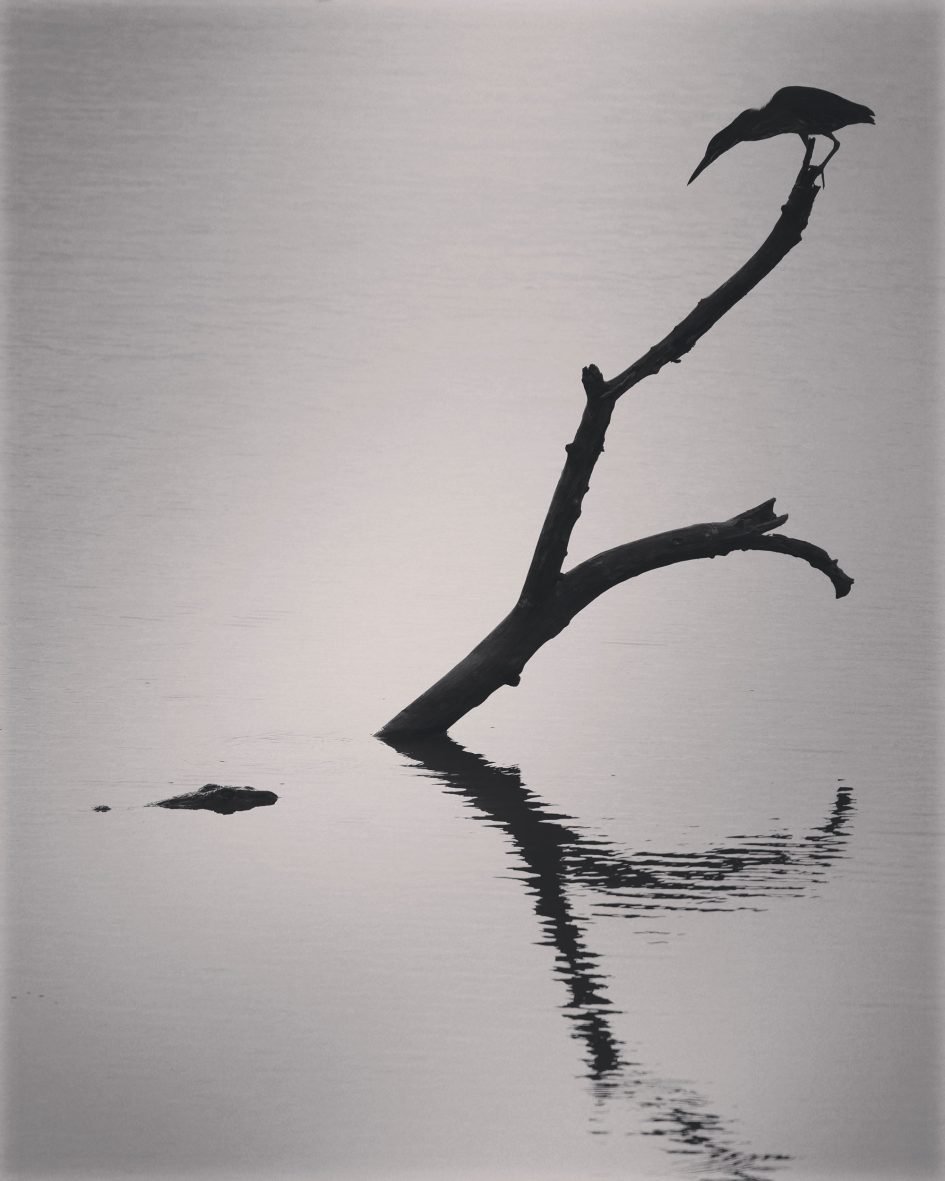
Above: it may seem natural to shoot wildlife in colour, but sometimes the scene and conditions lend themselves to a monochrome approach. As we drove past a small lake, I spotted this bird perched on an attractively shaped branch, staring intently at what turned out to be a crocodile below. The conditions were overcast and I was shooting towards the Sun, making it hard to see much detail on the subject. So rather than brightening the scene, I went the opposite way to render the shapes into silhouettes, using negative exposure compensation of around -1 EV and setting the camera to its monochrome, black and white mode. Another approach is to maintain the silhouette, but overexpose the background for a so-called ‘high-key’ washed-out white effect. Both can be very effective in these conditions.
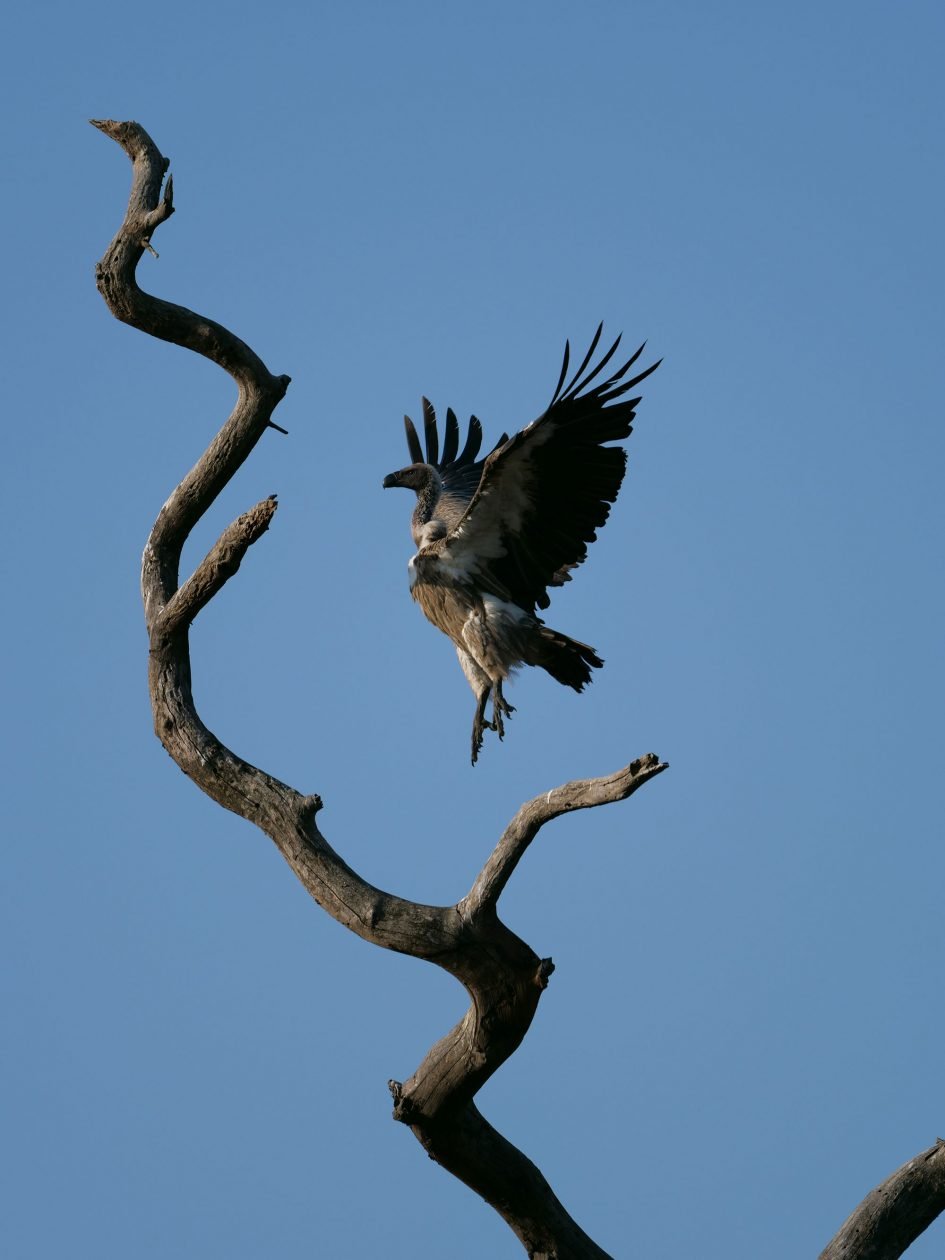
Above: birds in flight can be extremely challenging subjects to photograph, especially capturing the moment when they take-off, but the latest camera technologies can really help you grab the decisive moment. An increasing number of cameras now offer pre-capture options that keep a rolling buffer of a second or two’s worth of shots as you keep the shutter half-pressed, before committing them (and the following moments) to memory when you fully push down. Panasonic has long offered this with its 4K and 6K Photo modes, further extending it on the Lumix G9 to also record at the full resolution and in RAW as well as JPEG if desired. Here I used the SH1 PRE mode that records the previous second or so of action before you pushed the button along with a few seconds following; just aim at a bird that looks like it’s going to lift-off, then push down as it leaves the branch, safe in the knowledge you’ll have recorded the critical moments.
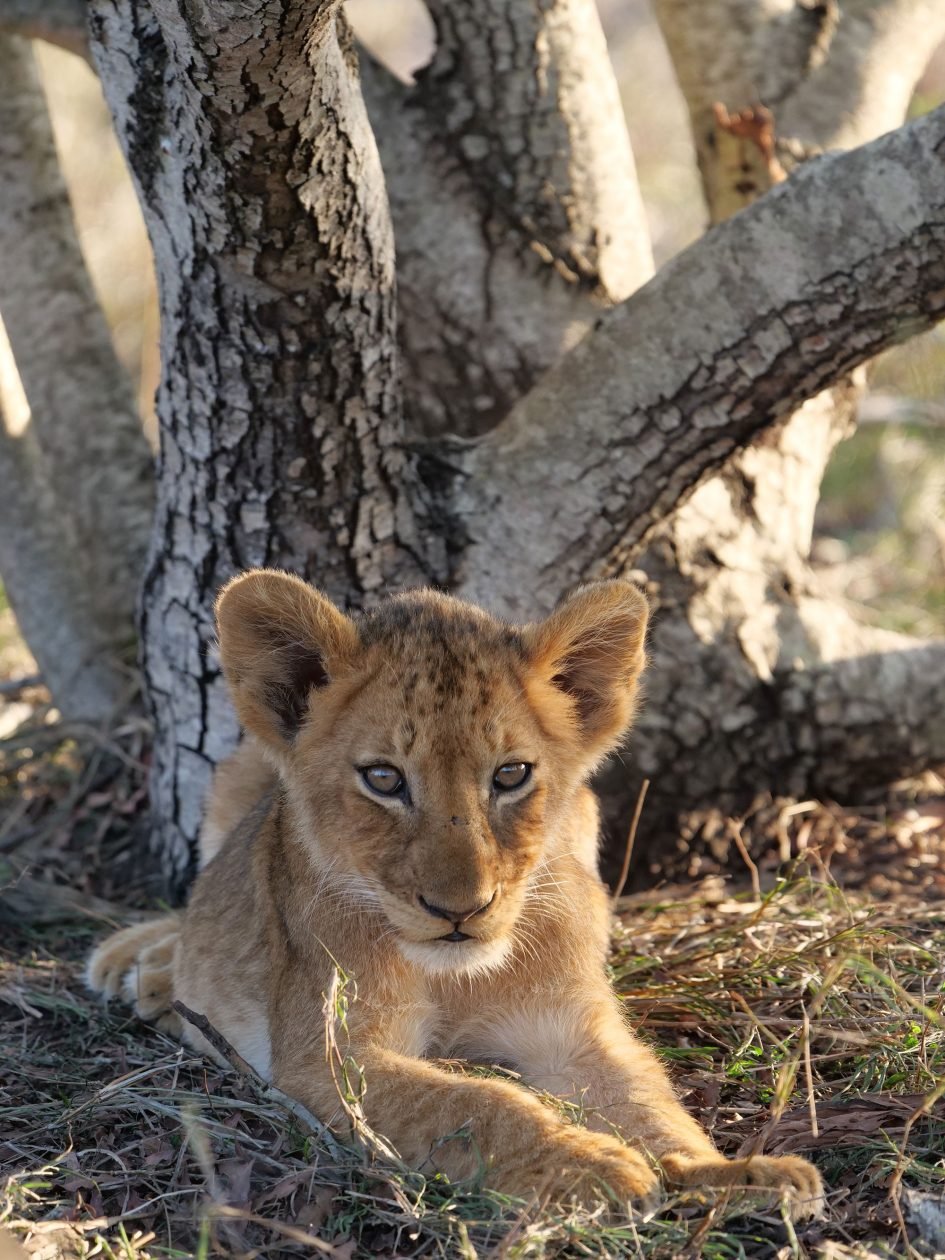
Above: towards the end of our trip we were lucky enough to come across a pride of Lions, including several baby cubs playing around. While they were more out in the open than the leopard earlier, there were still compositional challenges involving branches, twigs and even tall blades of grass. Again since you can’t adjust your own position without the vehicle moving, your next best option is to try raising the camera high, or better still, lower it down, using a flip-out screen to compose. Here I used a lower angle to try and shoot at roughly head height for the sub, while also using the position to minimise any distracting foliage in the scene. The low setting sunlight provided a lovely warm orange glow to the Lion’s fur.
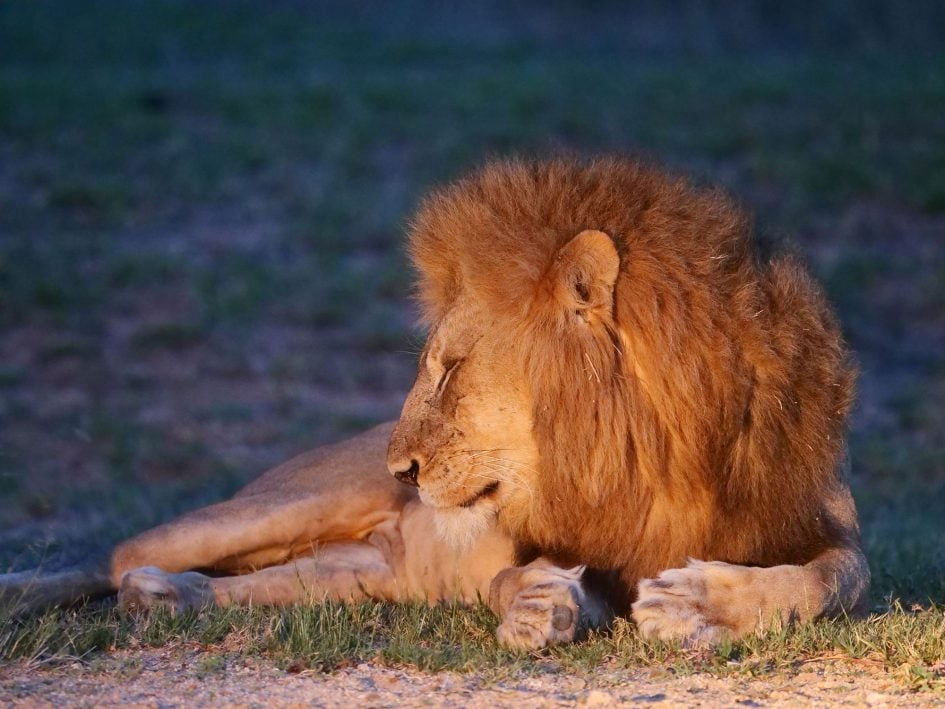
Above: As night fell and we went out on a game drive, we found the Lions again, including one of the males. In these situations, the usable light from the torches is always a lot lower than it looks – your eyes adjust to it and see the subject clearly but your camera can’t be fooled. When the light is low, you’ll need to use a high ISO sensitivity to achieve a sufficiently quick shutter speed to avoid camera shake, but if the subject and vehicle are stationary, you can exploit the excellent stabilisation on modern cameras to handhold at slower speeds than you may think are possible. I photographed this Lion handheld using the Leica 200mm f2.8 on the Lumix G9, where it delivers a 400mm equivalent field of view. Without stabilisation, I’d have needed a shutter speed of around 1/400 to avoid camera shake, but thanks to the stabilisation in the lens and body working together (known by Panasonic as Dual IS 2), I got away with a speed of 1/15 – over four stops of compensation. If the subject or the vehicle had been moving even a little, the result would have been blurred, but everything that evening was still.
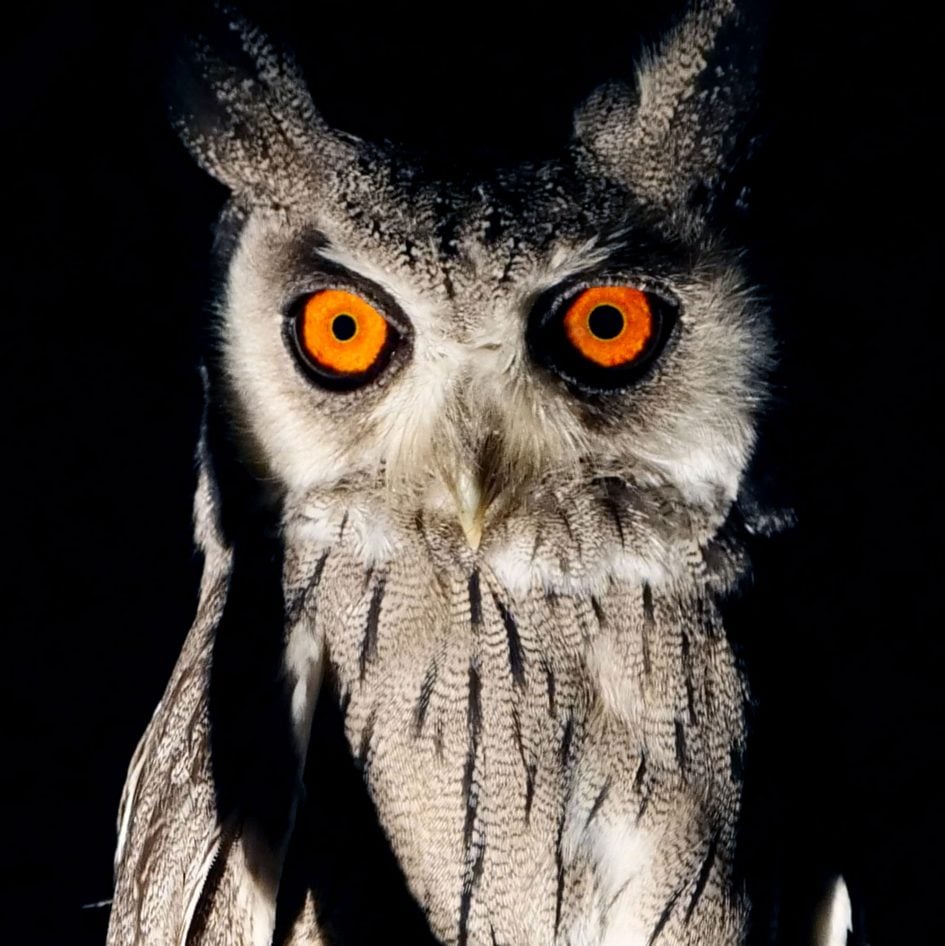
Above: On our way back to the lodge, our guide spotted an Eagle Own peering down at us from its perch. Like the Lion above, it was sufficiently still to deploy a fairly slow shutter speed, so I waited for it to turn its head and look me straight in the eye. The technical challenge here was light – not just the lack of it, but the reddish colour cast of the torch. The torch light colour was actually close to traditional tungsten lamps used at homes before LEDs became dominant, and all cameras come with a white balance setting to treat it as white light. In the heat of the moment though, it’s easy to forget to make the adjustment from auto or daylight white balance, so you end up with an orange cast to the image. An easy solution is to shoot in RAW, which allows you to change the white balance later. Some cameras including the Lumix G9 allow you to even make the adjustment in playback on the camera itself and save the result as a new file. Unfortunately I had my camera set to JPEG only due to shooting large bursts earlier, so had to make the colour correction in Photoshop, so the moral is when the lighting gets tough, shoot in RAW for the greatest flexibility; if memory isn’t an issue, I’d recommend RAW+JPEG mode.
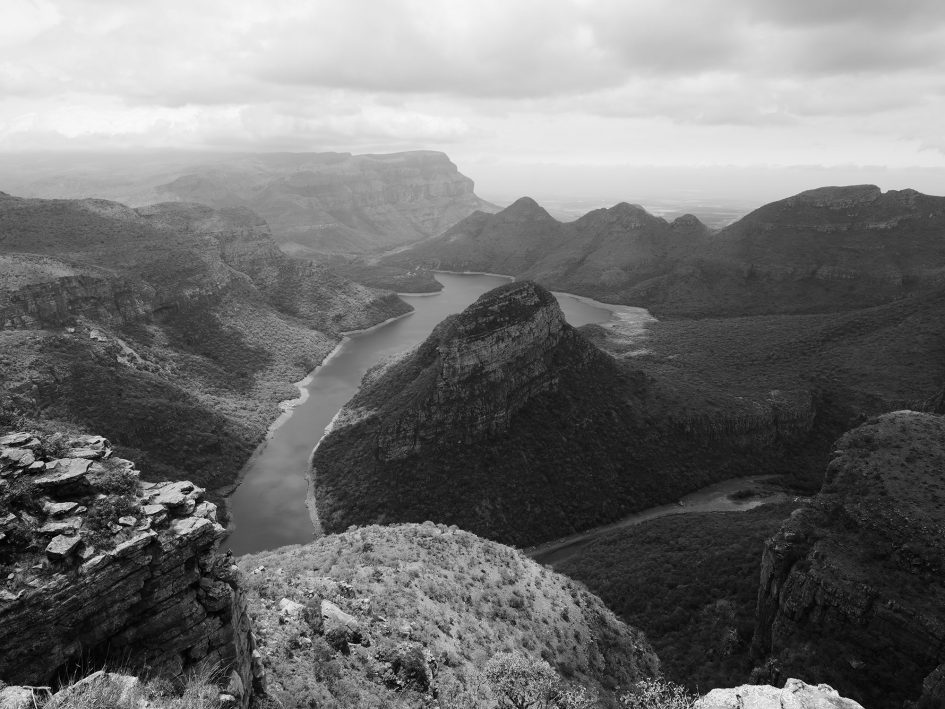
Above: While the focus of a safari may be to photograph animals, don’t forget to explore the surrounding landscapes. A bus ride form our lodge brought us into the nearby Mountains and the Blyde River Canyon park. The view when we visited was a little hazy, so I switched to a high contrast black and white mode on the camera.
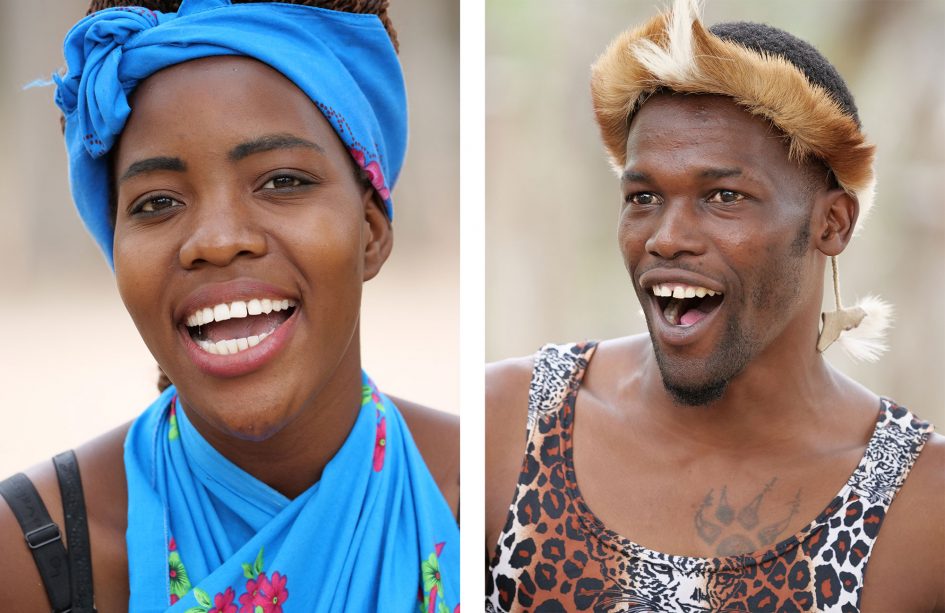
Above: A trip to the Nyani Cultural Village was educational, fun and also provided lots of opportunities for some great portrait shots. I took these during the show using the Leica 200mm at f2.8 to isolate the subject against a blurred background, although you can achieve similar results with less extreme lenses. The trick is to use a long focal length lens and to open the aperture to its widest position by choosing the smallest f-number available in Aperture Priority mode.
South Africa Safari verdict
My trip to South Africa was my third African safari, following previous visits to Kenya and Zambia, and all were unique experiences. I loved the open landscapes of Kenya and the rawness of Zambia, but for pure concentration of animals at close range, my time at Thornybush in South Africa was unparalleled. If you only have a couple of days and want to get close to all the action, it’s a location I’d highly recommend.
If you enjoyed my images here you might also like my book In Camera, which tells the story behind 100 of my travel photos, all out-of-camera with no Photoshop or post processing! If you’re looking for a camera recommendation, check out my Best Camera guides, or if you’d just like to say thanks, I’d love a coffee, cheers!
